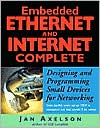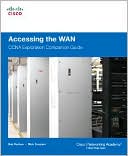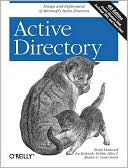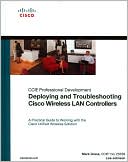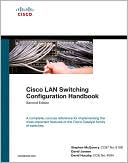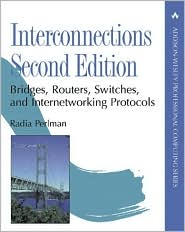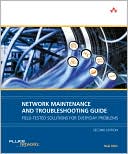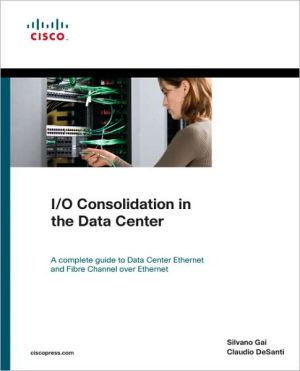Embedded Ethernet and Internet Complete
Bringing together two areas of computer technology—networking and embedded systems—this developer's guide offers guidance and examples for each of these, with a focus on the special requirements and limits of embedded systems. Because developing an embedded system for networking requires knowledge from many areas, including circuit design, programming, network architecture, and Ethernet and Internet protocols, developers are given valuable technical information on each that can be put to use...
Search in google:
Bringing together two areas of computer technology—networking and embedded systems—this developer's guide offers guidance and examples for each of these, with a focus on the special requirements and limits of embedded systems. Because developing an embedded system for networking requires knowledge from many areas, including circuit design, programming, network architecture, and Ethernet and Internet protocols, developers are given valuable technical information on each that can be put to use right away. Covered are the advantages and limits of using Ethernet to connect embedded systems in a local network, hardware and program code needed to connect an embedded system to an Ethernet network and the Internet, and how to build a network. Also discussed are how embedded systems can use TCP/IP and related protocols and how personal-computer applications can use the protocols to communicate with embedded systems. Developers will learn how their Web server's pages can include dynamic, real-time content and respond to user input. JavaRanch I'd recommend this for anyone who wants to learn about Ethernet or IP networking, on embedded systems or not.
Introductionix1.Networking Basics1Quick Start: The Elements of a Network2Components2Modular Design4The Network Protocol Stack4Clients and Servers11Requirements for Internet Communications13A Word about Web Servers14In Depth: Inside Ethernet14Advantages15Limits17Using a PC for Network Communications19The IEEE 802.3 Standard20Frames22Media Access Control: Deciding When to Transmit26Physical Addresses31Using a Protocol Analyzer to View Ethernet Traffic322.Building a Network: Hardware Options35Quick Start: Connecting to a PC36Components and Configurations36Other Options40In Depth: Cables, Connections and Network Speed41Cable Types for Different Uses41Twisted Pair Cable44Fiber Optic Cable53Coaxial Cable61Connections for Harsh Environments63Supplying Power65Going Wireless67Media Systems68Interfacing to Ethernet Controllers76Using Repeater Hubs, Ethernet Switches, and Routers793.Design Choices91Quick Start: Selecting Components92Complete Solutions92Special-Purpose Modules111In Depth: Ethernet Controllers118What the Hardware Does118Ethernet Controller Basics120The ASIX AX88796122Realtek RTL8019AS128SMSC LAN91C96130Cirrus Logic CS8900A1314.Using the Internet Protocol in Local and Internet Communications133Quick Start: Connecting to the Internet134Considerations in Obtaining Internet Service134Technologies for Connecting136Static and Dynamic IP Address142Connecting Multiple Computers to the Internet143Communicating through a Firewall144Obtaining and Using a Domain Name147In Depth: Inside the Internet Protocol153What IP Does153IP Addresses156The IP Header166Assigning an IP Address to a Host170Matching an IP Address to an Ethernet Interface175How a Datagram Finds Its Way to Its Destination178The Internet Control Message Protocol (ICMP)1805.Exchanging Messages Using UDP and TCP183Quick Start: Basic Communications183Configuring a Device for Network Communications184Sending UDP Datagrams191Receiving UDP Datagrams201Exchanging Messages using TCP208UDP and TCP from PC Applications218In Depth: Inside UDP and TCP221About Sockets and Ports221UDP: Just the Basics225TCP: Adding Handshaking and Flow Control2296.Serving Web Pages with Dynamic Data243Quick Start: Two Approaches244Serving a Page with Dynamic Data245Rabbit Real-time Web Page247TINI Real-time Web Page254In Depth: Protocols for Serving Web Pages264Using the Hypertext Transfer Protocol265HTTP Versions266Elements of an HTTP Message267Inside the Hypertext Markup Language273Server Side Include Directives2807.Serving Web Pages that Respond to User Input285Quick Start: Device Controller286The Device Controller's Web Page286Rabbit Device Controller288TINI Device Controller295In Depth: Using CGI and Servlets312CGI for Embedded Systems312Servlets for Embedded Systems315Receiving Form Data3168.E-mail for Embedded Systems339Quick Start: Sending and Receiving Messages340Sending an E-mail from a Rabbit341Sending an E-mail from a TINI344Receiving E-mail on a Rabbit348Receiving E-mail on a TINI352In Depth: E-mail Protocols359How E-mail Works359Using the Simple Mail Transfer Protocol362Sending E-mail with a URL371Using the Post Office Protocol3729.Using the File Transfer Protocol381Quick Start: FTP Clients and Servers382Rabbit FTP Client382TINI FTP Client389Rabbit FTP Server402TINI FTP Server407In Depth: Inside the File Transfer Protocol408Requirements408Transferring a File410Commands411Requesting a File with a URL41810.Keeping Your Devices and Network Secure421Quick Start: Limiting Access with Passwords422Using Basic Authentication423Basic Authentication on the Rabbit425Basic Authentication on the TINI428In Depth: Four Rules for Securing Your Devices and Local Network430Use a Firewall431Restrict Access with User Names and Passwords435Validate User Data437Encrypt Private Data439Index443
\ The Embedded MuseJan presents everything in the context of systems with limited resources; that's where the real strength of this book lies.\ \ \ \ \ Dr. Dobb's Java NewsletterThis book will convince you of one thing: The network is everywhere. With Java, writing network software is fairly straightforward.\ —December, 2003\ \ \ ECN MagazineThe hands-on approach and real software examples make this book invaluable.\ \ \ \ \ JavaRanchI'd recommend this for anyone who wants to learn about Ethernet or IP networking, on embedded systems or not.\ \
